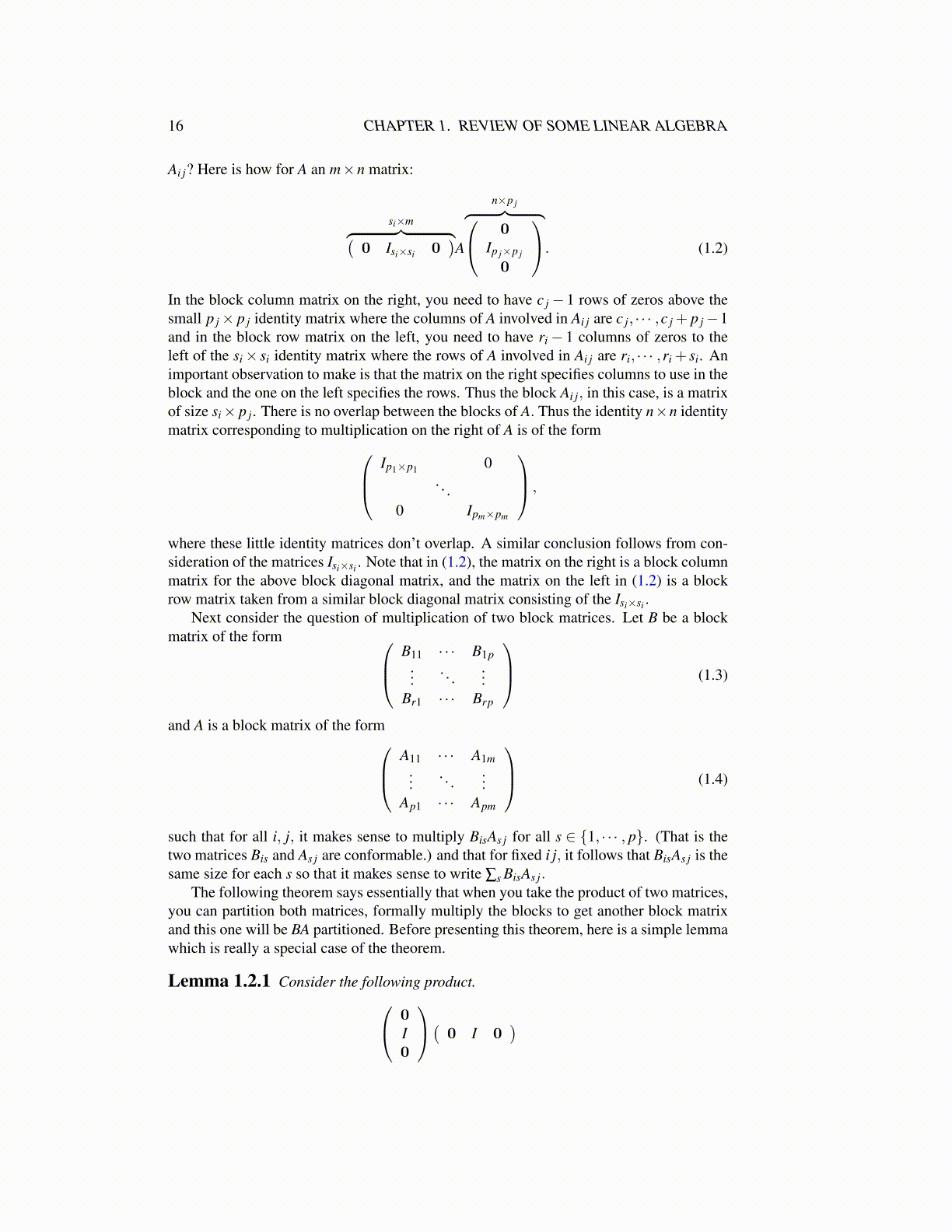
16 CHAPTER 1. REVIEW OF SOME LINEAR ALGEBRA
Ai j? Here is how for A an m×n matrix:
si×m︷ ︸︸ ︷(0 Isi×si 0
)A
n×p j︷ ︸︸ ︷ 0Ip j×p j
0
. (1.2)
In the block column matrix on the right, you need to have c j− 1 rows of zeros above thesmall p j× p j identity matrix where the columns of A involved in Ai j are c j, · · · ,c j + p j−1and in the block row matrix on the left, you need to have ri− 1 columns of zeros to theleft of the si× si identity matrix where the rows of A involved in Ai j are ri, · · · ,ri + si. Animportant observation to make is that the matrix on the right specifies columns to use in theblock and the one on the left specifies the rows. Thus the block Ai j, in this case, is a matrixof size si× p j. There is no overlap between the blocks of A. Thus the identity n×n identitymatrix corresponding to multiplication on the right of A is of the form Ip1×p1 0
. . .0 Ipm×pm
,
where these little identity matrices don’t overlap. A similar conclusion follows from con-sideration of the matrices Isi×si . Note that in (1.2), the matrix on the right is a block columnmatrix for the above block diagonal matrix, and the matrix on the left in (1.2) is a blockrow matrix taken from a similar block diagonal matrix consisting of the Isi×si .
Next consider the question of multiplication of two block matrices. Let B be a blockmatrix of the form B11 · · · B1p
.... . .
...Br1 · · · Brp
(1.3)
and A is a block matrix of the form A11 · · · A1m...
. . ....
Ap1 · · · Apm
(1.4)
such that for all i, j, it makes sense to multiply BisAs j for all s ∈ {1, · · · , p}. (That is thetwo matrices Bis and As j are conformable.) and that for fixed i j, it follows that BisAs j is thesame size for each s so that it makes sense to write ∑s BisAs j.
The following theorem says essentially that when you take the product of two matrices,you can partition both matrices, formally multiply the blocks to get another block matrixand this one will be BA partitioned. Before presenting this theorem, here is a simple lemmawhich is really a special case of the theorem.
Lemma 1.2.1 Consider the following product. 0I0
( 0 I 0)